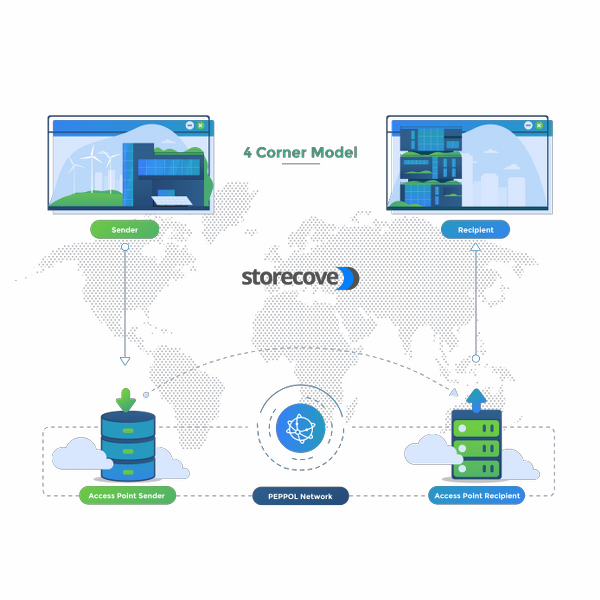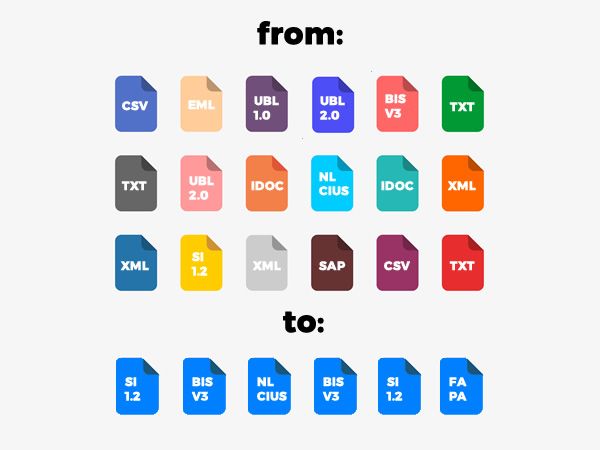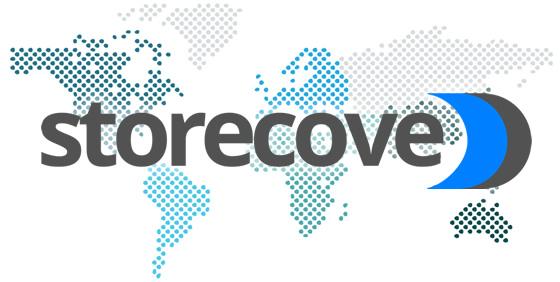A Peppol ID is a unique identification number used by companies and governments to facilitate the exchange of electronic invoices and documents.
It is widely used in the EU to ensure that the sender and receiver can easily identify each other when sending important documents and e-invoices on the Peppol network.
But how can you activate your own unique Peppol ID? And how can you use it to send your first e-invoice?
In this guide we'll provide you with the answers to the following questions:
- What is a PEPPOL ID?
- Why Use a PEPPOL ID?
- How To Obtain a PEPPOL ID?
- How To Use Your Peppol ID?
- Document Exchange Between Different Countries
- Examples of Peppol ID's
- How To Send Your First E-Invoice
- List of E-invoice Variations Per Country
- More information about PEPPOL ID
Want to create your own Peppol ID? Register to the Peppol network here.
What is a Peppol ID?
In simple terms, a Peppol ID is quite similar to a phone number. For instance, when an individual (or company) sends you a message by phone, you can identify the sender through their phone number. Similarly, a Peppol ID enables the sender and receiver to easily recognize each other on the Peppol network. This Peppol identifier consists of a unique number such as the company's VAT number, chamber of commerce number, or a government-issued ID.
The e-invoice and relevant documents are shared using the PEPPOL network. This exchange platform is a highly secure and safe international network, which ensures that the sender and the receiver can safely exchange e-invoices without relying on an unsafe mode of exchange that is sensitive to human errors.
Today, thousands of companies and users worldwide rely on a Peppol ID to identify the receiver and sender, allowing companies to send e-invoices and other business documents over the PEPPOL network, and therefore eliminating the probability of ghost invoices, (human) errors, and fraud.
A Brief History
PEPPOL stands for Pan-European Public Procurement OnLine project. The project was started in 2008 by the EU to provide a safe technical infrastructure to share e-invoices and other important documents.
Traditionally, lots of companies relied on electronic emails to participate in public tenders. Sending invoices and important documents through email and other means was not safe. Therefore, the EU launched a project to ensure a more reliable and regulated e-supported procurement system.

While the network was mainly geared towards the EU, it has since spread worldwide to include users from multiple countries outside of Europe (Australia, New Zealand, Malaysia, Singapore, Japan).
Why use a PEPPOL ID?
The Pan-European Public Procurement OnLine project aims to provide a secure technical infrastructure where participants can exchange digital messages, participate in public tenders, and send e-invoices and related documents.
There are several advantages of using a Peppol ID:
- Peppol is an official EU standard for sending electronic invoices to the public sector. Using the network, you can participate in tenders and send electronic documents to government agencies, municipal authorities, and other public sectors. The Peppol ID ensures that you're instantly recognized and your company can become a preferred supplier of the public sector.
- In recent years, European Union has implemented strict rules regarding the safety of data related to electronic documents. Not complying with safety rules can lead to heavy penalties. Therefore, getting a proper identification and sending your electronic documents according to the official EU standards keeps you safe from compliance irregularities.
- Sending e-invoices and related documents to multiple organizations no longer incurs a costly charge. In previous systems, you needed to pay fees and roaming charges to third parties to ensure that your data is safe and in compliance with international standards. Using the OpenPeppol standards, the only fee is the regulated service fee charged by the Peppol access point.
- Using the Peppol identifier, you have access to thousands of partners registered with the network. It's easy to exchange messages and communicate with others using a single connection. Other than the EU, the framework is also used by the United Kingdom, Australia, Canada, New Zealand, Singapore, South Africa, and the United States.
How To Obtain a PEPPOL ID?
To obtain a Peppol ID, you will need to register with a Peppol access Point. Luckily this is a relatively simple process.
Here is a complete list of Access Point providers. It's also a good idea to browse their respective websites to get an idea about their services. Your preferred Access Point provider will verify the information.
This verification usually takes one business day. If you're using software to maintain invoices, you may be able to use the software in conjunction with the access point.
After the registration, you should also take some time to browse the Directory. The directory is often called the yellow pages of the network. It is an extremely useful resource to check the document types supported by different users on the network.
The list will also provide additional information such as entity name, location, Peppol ID, and relevant website address.

Important Considerations
Except for a few providers who still use the AS2 standard, most Access Points support the latest AS4 communication protocol. Preferably, you should select a provider that supports AS4 or supports both AS2 and AS4. While you may still use AS2, AS4 is a better option because it adheres to the latest international standards.
You should also take a look at the Peppol authority of your provider. There are approximately 15 different local authorities who have modified some rules to align with the local rules.
The local authority may deviate from the standard rules to facilitate country-specific document types and registration in a particular SMP. It's something to consider if you will be dealing with partners in a specific country.
How To Use Your Peppol ID?
Messages on the Peppol network are sent and received using BUSDOX, Business Document Exchange Network, specifications. The BUSDOX is primarily used to identify the services that the receiver in the network can handle.
Before sending a message, you're required to identify the receiver and the Access Point Provider of the receiver. The information related to the Access Point Provider is easily found by searching the Service Metadata Publisher database.
The SMP is similar to an address book, which provides information about the receiving capabilities of the receiver. It may contain such data as delivery addresses, business processes, and the types of documents supported.
Under normal circumstances, you require the following information to send a message:
- The Peppol ID of the receiver.
- The document that you want to send.
- The document type ID and the document process ID.
If you're not sure whether the recipient can receive your document, you can check the capabilities of the receiver in the participant information tool. Your Access Point provider should also be able to provide you with more information about this matter.
Document Exchange Between Different Countries
It's important to highlight that sometimes new users on the network face difficulties in exchanging their messages with a recipient in another country. This happens primarily due to the different e-invoicing formats used in that particular jurisdiction.
Factur-X, Finvoice, Svefaktura, ZUGfERD and BIS V2 are examples of different types of formats used by their respective countries.
For instance, if you want to send an e-invoice to a user in Italy, the only format accepted by the country is FatturaPA. Using a different e-invoice format can cause delays or risks of not being accepted entirely, as there is no guarantee that the format in your country will be accepted in the other country.
Instead of learning the proper e-invoice format, it's better to use an Access Point Provider that can automatically convert your format to the format of the receiver. If you intend to communicate with multiple international clients, choose a provider that has the capability to do so.

Examples of Peppol ID's
If you want to send and receive messages on the Peppol network, it's important to understand the 3 important identifiers.
These identifiers will provide information about the sender, receiver, type of message, the message format, and other details.
The 3 identifiers are Peppol ID, document identifier, and process identifier.
- The Peppol ID is a message that contains information related to the identity of the user followed by the issuing agency code and the global location number.
It is displayed in the syntax: BusDoxParticipantIdentifier::IssuingAgencyCode:Code. - The document identifier indicates the type of document. It contains information about the type of document, the standardized transaction & subsequent extension, and the version of the syntax.
The syntax for the identifier is DocumentIdentifier = RootNamespace::documentLocalName##CustomizationID::Version. - The Process Identifier is another important field. It is used to specify the process used in the transaction.
How To Send Your First Peppol Invoice?
Sending your first e-invoice on the Peppol network can be quick and simple. Before logging in to your access point, gather a valid Peppol ID. If you don't have a Peppol ID, you can request one from your access point provider.
After receiving the Peppol ID, create an invoice in the format accepted by the receiver. Some Peppol access points use software that automatically converts your e-invoice to another format. Most bookkeeping systems can also do the job.
If it's still an issue, use the internet to create an invoice in the desired format. There are various free tools on the web that can help.
Before sending the invoice, review relevant guidelines. The website of your access point provider can be a good source or you can also get assistance from the following resources:
Yellow Pages & Directory
Information related to Local Authorities
Now, you should be ready to send your first e-invoice!

Extra: List of E-invoice Format(s) Per Country
European Countries
Austria: ebInterface and -BIS
Belgium: BIS Invoice
Bulgaria: Public Procurement Portal
Croatia: OASIS UBL 2.1, CII
Cyprus: BIS Billing 3.0I
Czech Republic: EDIFACT, UBL, ISDOC
Denmark: OIOUBL, BIS 3 UBL
Estonia: EVS 923, UBL
Finland: TEAPPSXML 3.0, Finvoice 3.0
France: Multiple Formats
Germany: XRechnung (Business to Government), ZUGFeRD 2.0 (Business to Business)
Greece: BIS 3.0
Hungary: XML-based e-invoice compatible with the European standards
Iceland: EN 16931 CIUS
Ireland: BIS, UBL, EDIFACT
Italy: FatturaPA
Latvia: XML-based standards
Lithuania: UBL v2.1, XML, AS4
Luxembourg: BIS, UBL 2.1
Malta: European Standards
Netherlands: SETU, NLCIUS, UBL-OHNL, BIS, SI-UBL
Norway: BIS Billing, UBL
Poland: UBL 2.1, UN/CEFACT CII, BIS Billing 3.0
Portugal: UBL 2.1, XML-GS1, CEFACT
Romania: SR EN 16931
Slovakia: None
Slovenia: e-SLOG
Spain: Facturae, EN 16931
Sweden: BIS Billing 3.0 (mandatory for public sector), Svefaktura version 1, SFTI Fulltextfaktura
United Kingdom: Multiple standards
Non-European Countries
Australia: BIS 3.0 ANZ
New Zealand: BIS 3.0 ANZ
India: JSON Format
Indonesia: e-Faktur Pajak
Philipines: None
Singapore: BIS 3.0 SG
South Korea: eVAT invoice
Taiwan: Electronic Government Uniform Invoice, MIG-3.2.1
Brazil: Multiple Formats
Egypt: JSON or XML invoices
Requirements for Businesses
Following countries require businesses to use appropriate e-invoice format to communicate with other businesses and government entities:
E-invoicing Status Per Country
Schedule a Free Video Call
Do you need help with setting up your PEPPOL / (international) e-invoicing process? We're here to help.
Schedule a demo with one of our e-invoicing experts.
More Information About the Peppol ID?
Contact us for more information or schedule a consult with one of our e-invoicing experts.
Read also:

Comments